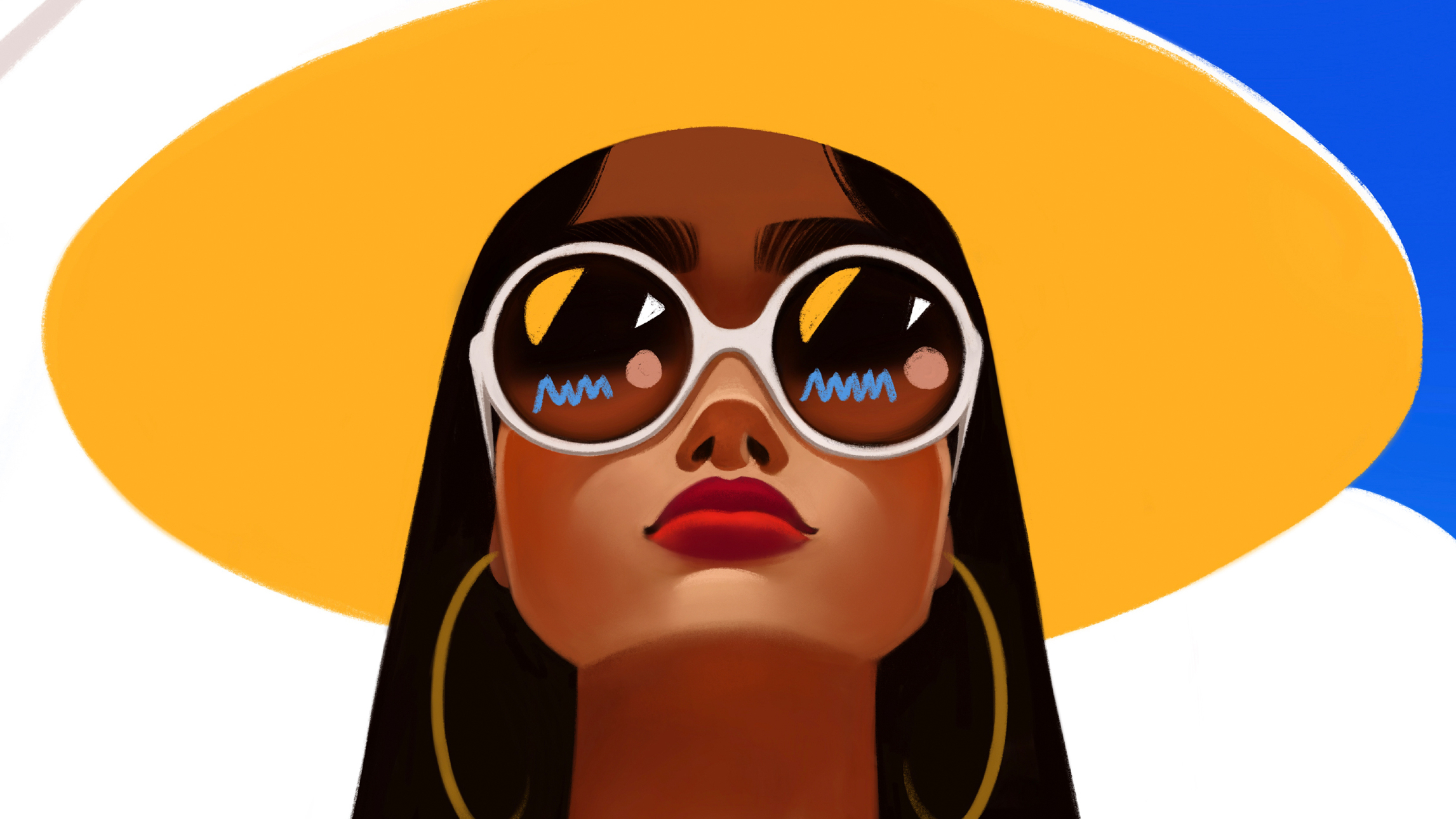Fusako Akimoto
"My work is about time and space, it's what I'm interested in most." Fusako Akimoto puts things in perspective.
If you've been grappling with the big issues of science lately, the chances are your reading material was accompanied by a Fusako Akimoto illustration. Fusako produces images with a strong sense of the abstract, a handy trait when your work involves "abstract stories about the universe."
Just an illusion
Fusako discovered illustration while studying in Tokyo: "I took an illustration module as part of my graphic design course and the tutor introduced me to pop art." That did the trick.
Thanks to the likes of David Hockney, before long illustration had taken over as her primary creative outlet, so she decided that was what she wanted to do: "I came to London and took an MA in illustration at the Royal College."
While studying at the Royal College, Fusako began to develop her style around a seemingly simple obsession with ideas of space and time: "I developed a technique using acetate," she says. "I would take photos or found images and colour copy them onto acetate, then make collages."
The final pieces developed Fusako's interest in depth and perception. "The effect was unpredictable and I liked that." The unpredictable nature of the work continued when Fusako began to work with projected images. "Unfortunately, acetate is expensive, so I was forced to look for other ways of working."
Having tried using overlaid slides to achieve similar results, Fusako moved into a higher gear. She explains: "I did installations which involved projecting images through gauze." Again, the results of her projects were unpredictable: "It had the effect of disorienting your sense of depth," she says. And again they took on our understanding of space and reality.
Other worlds
"My favourite jobs have been for New Scientist. They always have interesting articles," says Fusako. Oddly enough, "The ones they'd get me involved with were the fairly abstract stories about the universe." It looks like that research might just pay off.
When the story involves the space-time continuum, Fusako is ready with the visuals: "The concept of how to understand other worlds is difficult to illustrate, but I seem well suited to that type of subject." Fusako is being modest here because her work doesn't just answer the brief, it feels like you're actually thinking about the subject at hand.
"It comes down to depth and space again," she says. "They give me quite simple explanations of the story and a few elements - I just expand on things from there." Fusako takes the ideas for a walk and just lets nature take its course.
"I graduated in 1993 and back then computers were just so unsophisticated and slow," says Fusako. Coming from a traditional background, her work had remained strongly analog: "I had only touched on Photoshop when I left the Royal College. Even now I wouldn't say I'm good technically," she says.
Fusako had been exploring techniques mirrored in Photoshop's architecture while studying for her MA: "Photoshop can be similar to layering acetate," she explains. "I don't try to emulate that, but I always use lots of layers to get the kind of depth I'm looking for."
The conversion to digital has been all but completed: "I don't sketch or anything, I usually go straight to the computer now." But the accidental is still important to Fusako: "I love it even when the program crashes and you get the strangest stuff happening." This approach is extended to things such as filters, using them as on-demand accidents.
General theory
Fusako sees a clear trade-off in popularity between photography and illustration. "When I was at college, photography was much cooler," she says. This could be deduced from the fact that: "It was what all the tutors would be talking about."
But the pendulum has swung back the other way: "Illustration is definitely stronger now." It seems that illustration is coming of age, no longer dominated by the computer. "It's interesting because it's not totally digital," says Fusako. "There are hand-drawn elements creeping in, it's much more human."
Fusako leads a bit of a double life, holding down a day job as a graphic designer for an international branding consultant, something she says is "much more rational."
The rationality stems from the scope of the role: "The interesting thing," says Fusako, "is that you handle the project from start to finish. You take a much broader view." The illustrator is often peripheral to a job: "You only get involved in one section of a project." So working as a designer gives Fusako a chance to see the other side of the fence.
Interestingly, this role involves commissioning illustrators, something Fusako enjoys: "It's fun to see them pushing the brief to see how far they can take things." It also gives her some sympathy for those who've commissioned her in the past.

Thank you for reading 5 articles this month* Join now for unlimited access
Enjoy your first month for just £1 / $1 / €1
*Read 5 free articles per month without a subscription

Join now for unlimited access
Try first month for just £1 / $1 / €1
Get the Creative Bloq Newsletter
Daily design news, reviews, how-tos and more, as picked by the editors.

The Creative Bloq team is made up of a group of art and design enthusiasts, and has changed and evolved since Creative Bloq began back in 2012. The current website team consists of eight full-time members of staff: Editor Georgia Coggan, Deputy Editor Rosie Hilder, Ecommerce Editor Beren Neale, Senior News Editor Daniel Piper, Editor, Digital Art and 3D Ian Dean, Tech Reviews Editor Erlingur Einarsson, Ecommerce Writer Beth Nicholls and Staff Writer Natalie Fear, as well as a roster of freelancers from around the world. The ImagineFX magazine team also pitch in, ensuring that content from leading digital art publication ImagineFX is represented on Creative Bloq.
